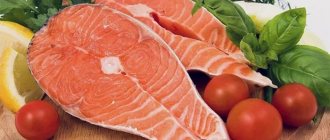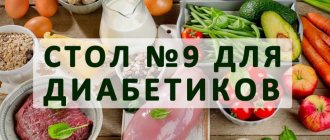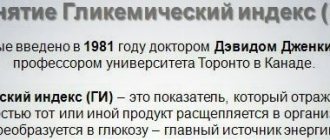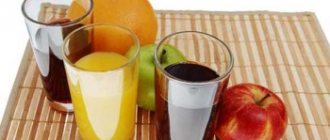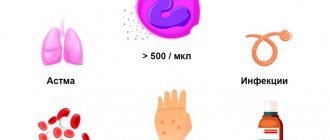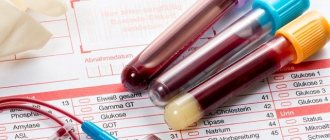General rules
Elevated blood cholesterol for atherosclerosis .
This fat-like substance is necessary for the formation of enzymes , hormones and other things. However, when its metabolism is disrupted and its level in the blood is high, irreversible changes develop in the wall of blood vessels - atherosclerosis, which is dangerous for its complications ( heart attack , stroke , disruption of the blood supply to various organs).
Dangerous in terms of the development of atherosclerosis is considered to be an imbalance between fractions - low-density lipoproteins LDL and high-density lipoproteins (HDL). The former have an atherogenic effect and their high content is a risk of cardiovascular diseases. High-density (“good”) cholesterol is produced by the body. Moderate physical activity promotes its production and at the same time reduces the accumulation of harmful substances, which only comes from foods.
Nutritional therapy has been developed to reduce cholesterol levels. A diet for lowering blood cholesterol levels can be used in the treatment and prevention of diseases - it is suitable for people who monitor their health. Its goal is to improve lipid metabolism and weight loss. The main principle of this diet is the reduction of animal fat, which we get from meat, fatty dairy products, and simple carbohydrates. Polyunsaturated fats (their sources are vegetable oils and nuts), fiber and complex carbohydrates (we get them from vegetables, grains, bran) should predominate in the diet. It is the large amount of fiber that helps remove excess cholesterol from the gastrointestinal tract. The protein content in this therapeutic diet is within normal limits, and can be obtained by consuming a variety of legumes and lean meats.
The amount of bread is no more than 200 g per day; the use of dietary bran bread is also allowed. Salt and the amount of liquid consumed are limited to 1.2 liters. Dishes must be prepared without salt, but it is allowed to add salt to prepared food on the table. Vegetables are eaten raw or stewed, and it is better to boil (bake) meat and fish to reduce fat in the diet. It is important to eat plenty of vegetables at dinner. Daily calorie content is 1400-1500 kcal.
Basic principles of nutrition for high blood cholesterol:
- Grains, vegetables and fruits, containing complex carbohydrates and high amounts of fiber, should make up about 60% of the diet. You need to eat 400 g of vegetables daily (one third fresh) and 200 g of grain products.
- The predominance of vegetable oils in the diet.
- Moderate consumption of permitted dairy products.
- Diet for high blood cholesterol includes fish, chicken and turkey, which are the foods of choice, and lean beef should take second place in the diet.
- The amount of salt is minimal.
- 2-3 eggs per week (unlimited protein).
- Avoid feeling hungry (have fruit snacks on time).
The diet for high cholesterol in women is no different from that for men and the general principles of nutrition remain the same. Total cholesterol in women and men should be no more than 5.2 mmol/l; a figure of 6.19 mmol/l is already considered significantly increased. HDL in women should be at least 0.9 mmol/l and up to 1.9 mmol/l; in men this figure is different - from 0.7 to 1.7 mmol/l.
The onset of menopause has an adverse effect on cholesterol metabolism and is explained by the fact that with the onset of menopause, estrogen decreases, and it regulates the production of “good” cholesterol. The increase in “bad” is facilitated by a woman’s sedentary lifestyle, overeating and consumption of fatty and high-calorie foods.
Diet for women with high cholesterol should contain as much as possible plant foods rich in phytosterols , which control and reduce the level of bad cholesterol:
- wheat germ;
- sesame seeds;
- sunflower seeds;
- flax seed;
- olive oil;
- grape seed oil;
- avocado.
Vegetables and fruits containing pectin : apples, citrus fruits, beets, watermelons and natural vegetable juices. Remember that all purple and red fruits and vegetables contain polyphenols that stimulate the production of good cholesterol: blueberries, strawberries, raspberries, cranberries, cranberry juice, chokeberries, lingonberries, pomegranate, purple and red grapes, plums, eggplants. Green leafy salads and vegetables are also useful: cabbage, lettuce, spinach, sorrel, artichoke and parsley, dill and green onions available to everyone.
It is imperative to include legumes in your diet, which, due to their high fiber content, will remove harmful cholesterol from the intestines. In terms of protein content, they can replace meat.
It is beneficial for older women to consume soy products containing phytoestrogens . Do not forget about proper culinary processing of meat and fish - a minimum of fat when cooking - it is best to bake in the oven, in pots or steamed.
Considering women's craving for sweets, it will be very difficult to give up sweet cream products, chocolate and sweets, pastries, cookies, waffles and limit yourself in sugar. But this must be done. Fatty meat should also disappear from the diet; you will have to give up processed meat (sausage, boiled pork). Pork, lard and bacon are prohibited. Don't forget about the need for physical activity. All this will only bring benefits - your tests will normalize, your weight will drop, and you will consider yourself attractive.
Often, high cholesterol is observed in diseases of the internal organs and endocrine system: nephritis , hypothyroidism , obesity , diabetes mellitus . This combined pathology requires a special approach to nutrition and more serious treatment. In each case, the issue is resolved individually and therapeutic nutrition is prescribed for the underlying disease. For example, what diet is indicated for high cholesterol due to kidney disease? In this case, you need to follow Table No. 7 and its variations. Diet 7 is prescribed for chronic kidney disease and, in addition to limiting salt and the amount of liquid you drink, it involves excluding foods rich in cholesterol (kidneys, liver, egg yolks, brains).
Nutritional features for hypercholesterolemia
- Fractional meals. The basic principle is to eat even when you don’t feel like it, but in small portions (100-200 g), 5-6 times a day.
- Ease of preparation. If you have high cholesterol, fried, smoked, pickled foods, and any preserves are strictly prohibited.
- Breakfast. Should consist of carbohydrates - porridge cooked in water or low-fat milk.
- Dinner. Must include soup or broth and hot dishes, for example, boiled fish or meat with a side dish.
- Dinner. Preference should be given to salads, vegetables with fish or meat.
- Lunch and afternoon tea. Fruit salads, fruits, fresh vegetables, dried fruits, nuts, and dairy products are ideal as snacks.
- 1 hour before bedtime, it is recommended to drink a glass of kefir, natural yogurt or freshly prepared vegetable juice.
- You need to drink about 1-1.5 liters of water per day. You cannot replace it with tea, compotes, or herbal decoctions.
- It is very important to reduce your consumption of animal fats by at least a third.
- It is advisable to completely give up coffee. Or drink no more than 1 cup a day of a brewed natural drink. Ginger tea has a good tonic effect. This is a good alternative to invigorating, but harmful coffee for high cholesterol.
When preparing a diet, women are advised to include more soy products containing phytoestrogens in the menu, consume sprouted wheat grains more often, and drink more natural juices. It is advisable to reduce sugar consumption and move more.
Men should carefully monitor their protein intake, eat more legumes and fish, give up salt or limit its amount to 8 g per day. Along with proper nutrition, it is advisable to completely give up bad habits (smoking, alcoholic drinks).
Very often, hypercholesterolemia is combined with pathologies of internal organs: high blood sugar, disturbances in the functioning of the thyroid gland, liver, and kidneys. This situation requires a special approach.
Authorized Products
Proper nutrition for high cholesterol should become the norm. What should it be? First of all, you need to exclude meat broths - prepare vegetarian soups; if this is difficult and unusual for you, then you can use weak secondary broth for first courses and carefully skim off the fat. Use potatoes in minimal quantities and it is better to prepare combined vegetable soups, cabbage soup and borscht.
Meat and poultry should be taken of lean types; poultry skin is unacceptable; additional fat should be trimmed from the meat. Since the diet involves limiting fat, the meat should be boiled or baked without adding sour cream, mayonnaise or any fat. Use vegetables as a side dish, not cereal. It is better to cook them for breakfast (oatmeal, buckwheat and brown rice).
Cabbage (all types), carrots, zucchini, pumpkin, eggplant, or salads made from fresh vegetables and green peas will help lower cholesterol levels. The total amount of vegetables eaten per day is at least 400g.
Use virgin vegetable oils to season ready-made dishes. omega-3 fatty acids, which regulate the production of beneficial lipids, is useful in this regard .
Lowering cholesterol levels can be achieved by introducing low-fat sea fish into the diet, but the consumption of meat (chicken) should still be limited to once a week. When it comes to fish, you should choose dietary varieties: hake, haddock, blue whiting, navaga, pollock, pollock.
Bread made from rye, grain flour and bran is allowed. You can use yeast-free bread (with bran, with flax seeds) for snacks and first courses. Milk and fermented milk products are allowed only in low fat content and in limited quantities. Green tea and weak coffee with milk and without sugar, vegetable and fruit juices without sugar are allowed.
Table of permitted products
| Proteins, g | Fats, g | Carbohydrates, g | Calories, kcal | |
Vegetables and greens | ||||
| eggplant | 1,2 | 0,1 | 4,5 | 24 |
| beans | 6,0 | 0,1 | 8,5 | 57 |
| zucchini | 0,6 | 0,3 | 4,6 | 24 |
| cabbage | 1,8 | 0,1 | 4,7 | 27 |
| broccoli | 3,0 | 0,4 | 5,2 | 28 |
| Brussels sprouts | 4,8 | 0,0 | 8,0 | 43 |
| cauliflower | 2,5 | 0,3 | 5,4 | 30 |
| green onion | 1,3 | 0,0 | 4,6 | 19 |
| bulb onions | 1,4 | 0,0 | 10,4 | 41 |
| carrot | 1,3 | 0,1 | 6,9 | 32 |
| cucumbers | 0,8 | 0,1 | 2,8 | 15 |
| squash | 0,6 | 0,1 | 4,3 | 19 |
| salad pepper | 1,3 | 0,0 | 5,3 | 27 |
| parsley | 3,7 | 0,4 | 7,6 | 47 |
| salad | 1,2 | 0,3 | 1,3 | 12 |
| beet | 1,5 | 0,1 | 8,8 | 40 |
| celery | 0,9 | 0,1 | 2,1 | 12 |
| soybeans | 34,9 | 17,3 | 17,3 | 381 |
| asparagus | 1,9 | 0,1 | 3,1 | 20 |
| tomatoes | 0,6 | 0,2 | 4,2 | 20 |
| Jerusalem artichoke | 2,1 | 0,1 | 12,8 | 61 |
| pumpkin | 1,3 | 0,3 | 7,7 | 28 |
| dill | 2,5 | 0,5 | 6,3 | 38 |
| beans | 7,8 | 0,5 | 21,5 | 123 |
| garlic | 6,5 | 0,5 | 29,9 | 143 |
| lentils | 24,0 | 1,5 | 42,7 | 284 |
Fruits | ||||
| avocado | 2,0 | 20,0 | 7,4 | 208 |
| oranges | 0,9 | 0,2 | 8,1 | 36 |
| pomegranate | 0,9 | 0,0 | 13,9 | 52 |
| grapefruit | 0,7 | 0,2 | 6,5 | 29 |
| pears | 0,4 | 0,3 | 10,9 | 42 |
| lemons | 0,9 | 0,1 | 3,0 | 16 |
| mango | 0,5 | 0,3 | 11,5 | 67 |
| tangerines | 0,8 | 0,2 | 7,5 | 33 |
| nectarine | 0,9 | 0,2 | 11,8 | 48 |
| peaches | 0,9 | 0,1 | 11,3 | 46 |
| apples | 0,4 | 0,4 | 9,8 | 47 |
Berries | ||||
| gooseberry | 0,7 | 0,2 | 12,0 | 43 |
| Red currants | 0,6 | 0,2 | 7,7 | 43 |
| black currant | 1,0 | 0,4 | 7,3 | 44 |
Nuts and dried fruits | ||||
| nuts | 15,0 | 40,0 | 20,0 | 500 |
| almond | 18,6 | 57,7 | 16,2 | 645 |
| flax seeds | 18,3 | 42,2 | 28,9 | 534 |
| fenugreek seeds | 23,0 | 6,4 | 58,3 | 323 |
| sunflower seeds | 20,7 | 52,9 | 3,4 | 578 |
Cereals and porridges | ||||
| buckwheat (kernel) | 12,6 | 3,3 | 62,1 | 313 |
| oat groats | 12,3 | 6,1 | 59,5 | 342 |
| cereals | 11,9 | 7,2 | 69,3 | 366 |
| wheat bran | 15,1 | 3,8 | 53,6 | 296 |
Raw materials and seasonings | ||||
| basil | 2,5 | 0,6 | 4,3 | 27 |
| honey | 0,8 | 0,0 | 81,5 | 329 |
Dairy | ||||
| kefir 0% | 3,0 | 0,1 | 3,8 | 30 |
| kefir 1% | 2,8 | 1,0 | 4,0 | 40 |
Cheeses and cottage cheese | ||||
| cottage cheese 0.6% (low fat) | 18,0 | 0,6 | 1,8 | 88 |
| curd tofu | 8,1 | 4,2 | 0,6 | 73 |
Meat products | ||||
| beef | 18,9 | 19,4 | 0,0 | 187 |
Bird | ||||
| chicken fillet | 23,1 | 1,2 | 0,0 | 110 |
| turkey | 19,2 | 0,7 | 0,0 | 84 |
Eggs | ||||
| eggs | 12,7 | 10,9 | 0,7 | 157 |
Fish and seafood | ||||
| fish | 18,5 | 4,9 | 0,0 | 136 |
| seaweed | 0,8 | 5,1 | 0,0 | 49 |
Oils and fats | ||||
| grape seed oil | 0,0 | 99,9 | 0,0 | 899 |
| linseed oil | 0,0 | 99,8 | 0,0 | 898 |
| olive oil | 0,0 | 99,8 | 0,0 | 898 |
| sunflower oil | 0,0 | 99,9 | 0,0 | 899 |
Non-alcoholic drinks | ||||
| mineral water | 0,0 | 0,0 | 0,0 | — |
| instant chicory | 0,1 | 0,0 | 2,8 | 11 |
| green tea | 0,0 | 0,0 | 0,0 | — |
| * data is per 100 g of product | ||||
Basic principles of the diet
Diet
Small meals, 5 times a day. This allows you to reduce food portions and suppresses hunger between meals.
Temperature
The food temperature is normal, there are no restrictions.
Salt
The amount of table salt is limited to 3 - 5 grams, food is prepared unsalted, and if necessary, add salt at the table. Salt causes fluid retention in the body, which increases the load on the cardiovascular system.
Liquid
Drinking free fluid up to 1.5 liters (unloads the cardiovascular and urinary systems).
Alcohol
Alcohol should be avoided, especially strong alcoholic drinks. But doctors recommend (in the absence of contraindications) to take 50–70 ml of natural red wine at night, which contains flavonoids that have antioxidant properties (thus, dry red wine protects the walls of blood vessels from the formation of atherosclerotic plaques). In addition, a strict smoking ban is imposed.
Weight
People with obesity and overweight need to normalize their weight. Excess fat in the body is an additional source of “bad” cholesterol, and also complicates the functioning of the heart and blood vessels.
Foods high in lipotropic substances and vitamins
Preference should be given to fruits and vegetables rich in vitamins C and P, group B, potassium and magnesium salts. These vitamins protect vascular walls due to their antioxidant effect, and potassium and magnesium are involved in heart rhythm.
Fats
If possible, you should replace animal fats with vegetable fats as much as possible. Vegetable fats do not contain cholesterol; in addition, they are beneficial for the walls of blood vessels due to their high content of vitamin E (antioxidant).
Fully or partially limited products
Excluded: pork, cooking fats, refined vegetable oil, margarine, butter, duck and goose meat, offal (kidneys, brains, liver), sausages and smoked meats. Fatty fish, fish roe (contains a large amount of cholesterol), crayfish, shrimp, crabs and any canned fish, including cod liver, are prohibited.
You should not consume puff pastry and pastry products, highly extractive meat, fish, or mushroom broths. Cream, fatty cottage cheese and sour cream are not allowed in the diet. Prohibition of consumption of chocolate, full-fat ice cream, products with cream and products with palm and coconut oil. Mayonnaise and ketchup should not be used as sauces.
Limit:
- beef (1-2 times a week);
- red fish;
- egg yolks;
- potato;
- fatty cheeses;
- nuts;
- buckwheat;
- honey.
Table of prohibited products
| Proteins, g | Fats, g | Carbohydrates, g | Calories, kcal | |
Fruits | ||||
| bananas | 1,5 | 0,2 | 21,8 | 95 |
Nuts and dried fruits | ||||
| raisin | 2,9 | 0,6 | 66,0 | 264 |
Cereals and porridges | ||||
| semolina | 10,3 | 1,0 | 73,3 | 328 |
| white rice | 6,7 | 0,7 | 78,9 | 344 |
Flour and pasta | ||||
| pasta | 10,4 | 1,1 | 69,7 | 337 |
Bakery products | ||||
| bagels | 16,0 | 1,0 | 70,0 | 336 |
| bagels | 16,0 | 1,0 | 70,0 | 336 |
| crackers | 11,2 | 1,4 | 72,2 | 331 |
Confectionery | ||||
| jam | 0,3 | 0,2 | 63,0 | 263 |
| jam | 0,3 | 0,1 | 56,0 | 238 |
| candies | 4,3 | 19,8 | 67,5 | 453 |
| pastry cream | 0,2 | 26,0 | 16,5 | 300 |
Ice cream | ||||
| ice cream | 3,7 | 6,9 | 22,1 | 189 |
Cakes | ||||
| cake | 4,4 | 23,4 | 45,2 | 407 |
Chocolate | ||||
| chocolate | 5,4 | 35,3 | 56,5 | 544 |
Raw materials and seasonings | ||||
| ketchup | 1,8 | 1,0 | 22,2 | 93 |
| mayonnaise | 2,4 | 67,0 | 3,9 | 627 |
Dairy | ||||
| cream | 2,8 | 20,0 | 3,7 | 205 |
| sour cream 30% | 2,4 | 30,0 | 3,1 | 294 |
| sour cream 40% (fat) | 2,4 | 40,0 | 2,6 | 381 |
Cheeses and cottage cheese | ||||
| cheese | 24,1 | 29,5 | 0,3 | 363 |
| cottage cheese 18% (fat) | 14,0 | 18,0 | 2,8 | 232 |
Meat products | ||||
| pork | 16,0 | 21,6 | 0,0 | 259 |
| pork liver | 18,8 | 3,6 | 0,0 | 108 |
| pork kidneys | 13,0 | 3,1 | 0,0 | 80 |
| pork fat | 1,4 | 92,8 | 0,0 | 841 |
| salo | 2,4 | 89,0 | 0,0 | 797 |
| beef liver | 17,4 | 3,1 | 0,0 | 98 |
| beef kidneys | 12,5 | 1,8 | 0,0 | 66 |
| beef brains | 9,5 | 9,5 | 0,0 | 124 |
| mutton | 15,6 | 16,3 | 0,0 | 209 |
Sausages | ||||
| smoked sausage | 16,2 | 44,6 | 0,0 | 466 |
| smoked sausage | 9,9 | 63,2 | 0,3 | 608 |
| sausages | 10,1 | 31,6 | 1,9 | 332 |
| sausages | 12,3 | 25,3 | 0,0 | 277 |
Bird | ||||
| smoked chicken | 27,5 | 8,2 | 0,0 | 184 |
| duck | 16,5 | 61,2 | 0,0 | 346 |
| smoked duck | 19,0 | 28,4 | 0,0 | 337 |
| goose | 16,1 | 33,3 | 0,0 | 364 |
Fish and seafood | ||||
| smoked fish | 26,8 | 9,9 | 0,0 | 196 |
| salted fish | 19,2 | 2,0 | 0,0 | 190 |
| Red caviar | 32,0 | 15,0 | 0,0 | 263 |
| black caviar | 28,0 | 9,7 | 0,0 | 203 |
| squid | 21,2 | 2,8 | 2,0 | 122 |
| shrimps | 22,0 | 1,0 | 0,0 | 97 |
| salmon | 19,8 | 6,3 | 0,0 | 142 |
| sturgeon | 16,4 | 10,9 | 0,0 | 163 |
| canned fish | 17,5 | 2,0 | 0,0 | 88 |
| semi-finished fish products | 12,5 | 6,7 | 14,7 | 209 |
| sardine | 20,6 | 9,6 | — | 169 |
| mackerel | 18,0 | 13,2 | 0,0 | 191 |
| cod (liver in oil) | 4,2 | 65,7 | 1,2 | 613 |
| boiled oysters | 14,0 | 3,0 | — | 95 |
| fresh oysters | 14,0 | 6,0 | 0,3 | 95 |
Oils and fats | ||||
| butter | 0,5 | 82,5 | 0,8 | 748 |
| creamy margarine | 0,5 | 82,0 | 0,0 | 745 |
| coconut oil | 0,0 | 99,9 | 0,0 | 899 |
| palm oil | 0,0 | 99,9 | 0,0 | 899 |
| rendered beef fat | 0,0 | 99,7 | 0,0 | 897 |
| cooking fat | 0,0 | 99,7 | 0,0 | 897 |
| rendered pork fat | 0,0 | 99,6 | 0,0 | 896 |
Non-alcoholic drinks | ||||
| cola | 0,0 | 0,0 | 10,4 | 42 |
| lemonade | 0,0 | 0,0 | 6,4 | 26 |
| Pepsi | 0,0 | 0,0 | 8,7 | 38 |
| sprite | 0,1 | 0,0 | 7,0 | 29 |
| * data is per 100 g of product | ||||
Recommended and prohibited products
When selecting recipes, you need to take into account their composition. Some foods are strictly prohibited for people with high cholesterol. These include spicy, salty, fried foods, and smoked foods. List of permitted and prohibited products:
| Can | It is forbidden | |
| Meat | lean poultry meat (chicken, quail); veal, beef, rabbit, horse meat. | fatty poultry meat: duck, goose, turkey; pork, lamb, lard. |
| Animal by-products | Liver, kidneys, tongue (beef) | Heart, brains, smoked meats from any offal |
| Poultry by-products | Heart, liver, stomach | Salted and smoked products |
| Sausages | Low-fat sausages, chicken ham | Pate, fatty sausages, salami, sausages |
| Fish | Trout, pike, tuna, cod | Carp, herring, salmon |
When preparing meals, only recommended products should be used. Otherwise, the amount of cholesterol may increase, continuing to clog blood vessels.
Menu (Power Mode)
The cholesterol diet menu is designed for 5 meals a day. Since you should not allow yourself to feel hungry during the day or in the evening, you are allowed to eat an apple, grapefruit, carrots or drink a fermented milk product. A sample menu for several days might look like this:
First option
| Breakfast |
|
| Lunch |
|
| Dinner |
|
| Afternoon snack |
|
| Dinner |
|
Second option
| Breakfast |
|
| Lunch |
|
| Dinner |
|
| Afternoon snack |
|
| Dinner |
|
Third option
| Breakfast |
|
| Lunch |
|
| Dinner |
|
| Afternoon snack |
|
| Dinner |
|
Below is a table of low cholesterol from which you can make up your diet.
| Products name | Featured | Prohibited |
| Fish | Lean sea fish (hake, blue whiting, pollock, navaga, pollock, haddock) and pike three times a week. | Salmon, mackerel, sardine, eel, mackerel, herring, oysters, caviar, shrimp, prepared fish, river fish in limited quantities. |
| Eggs | Up to 3 pieces per week. | Egg yolk. |
| Fats | Sunflower, corn, olive or soybean oils, up to 2 tablespoons per day. | Lard, margarine, palm and coconut oil, butter, animal fat. |
| Meat | Veal, rabbit, turkey, chicken, lean beef once or twice a week. The bird is allowed without skin. | Pork, fatty beef, fatty lamb, duck and goose meat, sausages, liver, kidneys, brain pates, sausages, sausages. |
| Dairy | Skim milk, low-fat kefir, yogurt, cheeses up to 20%, low-fat cottage cheese. | Full-fat cottage cheese, sour cream, cream, ice cream, curd mass, condensed milk, processed cheese. |
| Vegetables | Fresh and frozen, corn and beans. | Potatoes and potato snacks. |
| Fruits | Everything except banana and grapes, as well as dried fruits. | Sugared fruits, pistachios and peanuts, hazelnuts. |
| Cereals | Whole grain bread, brown rice, oatmeal, whole grain pasta. | White rice, semolina, limit buckwheat. |
| Bakery | Oatmeal cookies, bread rolls, dry cookies, “Fitness” cookies. | Biscuits, pastries, rolls, cakes, puff pastry products. |
| Sweets | Low-fat puddings, jellies without added sugar, fruit ice cream. | Chocolate, pastry cream, toffee, marmalade, pastille, sugar, syrups. |
| Beverages | Sugar-free juices, green tea, weak coffee, still mineral water. | Cocoa with milk, coffee with cream, alcoholic and sweet carbonated drinks. |
Balanced diet
For the full functioning of systems and organs, the human body must receive proteins, fats and carbohydrates from food every day. Therefore, even with a high concentration of cholesterol in the blood, it is impossible to completely abandon animal fats.
Proteins (proteins)
They are high molecular weight organic substances. Consist of alpha acids.
The greatest amount of protein is contained:
- lean veal;
- chicken breast;
- shrimps;
- sea fish;
- legumes
When planning your diet, it is important to consider that some of these foods contain high amounts of cholesterol. For example, shrimp or veal. Therefore, they can be included in the menu no more than 2 times a week.
Fats
Fats are a source of energy for the body. If you have high cholesterol, avoid saturated fats, which can increase levels of harmful LDL.
Preference should be given to vegetable, unsaturated fats, which are found in the following products:
- vegetable oils;
- nuts;
- dairy, fermented milk products.
Sea fish deserves special attention. It contains a lot of cholesterol, but it is not dangerous because its harmful effects are neutralized by unsaturated fatty acids. Therefore, in addition to vegetables and fruits, sea fish is an essential element of nutrition. It can be added to the menu every day.
Carbohydrates
Carbohydrates are simple and complex sugars, a source of energy, building material for cells. Their deficiency immediately affects the state of the body: the functioning of the cardiovascular system is disrupted, the metabolic rate drops, and the condition of the nervous system worsens.
The largest amount of carbohydrates is contained:
- whole wheat bread;
- vegetables fruits;
- legumes;
- whole grains;
- low-fat dairy products.
It is important to know that there is a separate group of carbohydrates called refined. They do not replenish the lack of energy in the body, but rather completely deplete the energy supply. Refined carbohydrates are easily digested.
They are developed artificially, therefore they are completely devoid of useful qualities. When there is an excess of them, they begin to quickly turn into fats. The diet completely excludes foods containing refined carbohydrates. These include confectionery, baked goods, sweets, and carbonated drinks.
Recipes
Fish baked with vegetables
0.5 kg pike perch fillet, 2-3 tomatoes, zucchini, eggplant, lettuce pepper, onion, 2 cloves of garlic, 2 tbsp. spoons of vegetable oil.
Roughly chop the onion, garlic, zucchini and eggplant. Mix the vegetables, season with pepper, vegetable oil, Provençal herbs and marinate for 30 minutes. Also grease the fish fillet with oil and season with herbs. Place the prepared vegetables on foil, place the fish fillet on top and cover with small tomatoes. Bake for 15-20 minutes.
Fish baked with vegetables and cheese
Hake fillet 500 g, carrots, onions, tomatoes, low-fat cheese 50 g, vegetable oil.
Cut the fillet into portions, marinate in spices and allspice. In a frying pan, simmer finely chopped onion and grated carrots, adding a little vegetable oil. Place the hake fillet in a small dish, cover with a layer of stewed vegetables and slices of chopped tomato. Bake for 20 minutes, sprinkle with grated cheese at the end and place in the oven for another 3 minutes.
Baked chicken breast
Chicken fillet 300 g, fresh vegetables and herbs to taste, olive oil 1 tbsp, milk 0.25 cup, garlic.
Lightly beat the chicken fillet and marinate in olive oil with garlic, rosemary and milk for half an hour. Place in pan and bake. Season the finished dish with salt and serve with any fresh vegetables.
Chicken fillet with green beans
One chicken fillet, 300 g beans, pepper, spices, olive oil, salt.
Cut the chicken fillet into cubes and simmer until half cooked in a saucepan with a little water. Add frozen green beans, spices to taste and simmer under the lid until the chicken is completely cooked. Before serving, add herbs, olive oil and a little salt. Serve warm.
Two-stage technique
With a moderate diet (second stage diet), the total amount of fat (TQF) is a maximum of 30% of the daily calorie content of the menu; the content of saturated fatty acids (SFA) is a maximum of 10%, and cholesterol is not more than 300 mg/day.
Daily ration
- Lean meat (without fat and skin) and sea fish – up to 90 grams per meal (maximum 180 g/day).
- Vegetable oil (olive, flaxseed, pumpkin, corn) in an amount not exceeding 10% of daily calories. Give preference to cold pressed oils.
- The basis of nutrition is carbohydrates and fiber - 50-65% of the diet. Therefore, it is allowed to eat whole grain bread, minimally processed cereals, fruits and vegetables.
Prohibited products:
- butter and palm oil;
- milk and fermented milk products (only zero fat content is allowed);
- egg yolk;
- meat by-products (liver, navels, heart, kidneys);
- sausages, sausage;
- shrimp, squid;
- caviar (red and black);
- sweets (cakes, pastries) and white bread baked goods.
The duration of such a nutrition system ranges from 6 to 12 weeks. After which repeated blood tests are taken. If the TC indicator has returned to normal, then it is enough to stick to proper nutrition and retake tests according to the scheme approved by the attending physician. If total cholesterol has not decreased to the desired level, then you should move to a more stringent regimen.
For the second stage diet, the diet and list of prohibited foods remain unchanged, as does the OKL (30%). In this case, EFA is reduced to 7%, and the maximum amount of cholesterol should not exceed 200 mg/day.
The transition from stage 1 to stage 2 should be carried out smoothly and under the supervision of the attending physician.
Advantages and disadvantages
| pros | Minuses |
|
|
Low cholesterol: dangers and complications
When working to lower your bad cholesterol levels, you should remember that common sense and the right approach to diet are the key to success. When removing “bad” fats, you can overdo it and deprive the body of such useful and necessary “good” nutrients.
You should be concerned if during treatment you notice the appearance or worsening of the following conditions:
- decreased or lack of appetite;
- intestinal disorder;
- muscular dystonia;
- drowsiness, lethargy, slow reaction;
- sudden mood swings, aggression, depressive syndromes;
- decline in sexual activity.
All this may indicate low total cholesterol.
Why is it dangerous?
- Vessels become vulnerable and fragile, cerebral circulation worsens.
- A decrease in serotonin synthesis due to the lack of healthy fats leads to depression, suicidal conditions, increased anxiety, and sleep disorders. In older people it provokes dementia (senile insanity), Alzheimer's disease.
- The level of production and absorption of fat-soluble vitamins, including vitamin D and calcium, sharply decreases. The result is osteoporosis.
- People with low TC are at risk for infertility, because sex hormones require cholesterol.
- Insulin resistance is impaired, which leads to type 2 diabetes.
Therefore, if you feel worse, you should see a doctor and take another blood test. The doctor will be able to take timely measures and adjust your diet.
Reviews and results
This diet is designed for 3 months in some cases and more on the recommendation of a doctor. This diet program allows you to lose weight and improve your overall health. Many people note normalization of cholesterol and blood pressure , disappearance of constipation and heartburn , which is associated with the elimination of fatty and fried foods.
- “... The problem with cholesterol arose recently, and the doctor insisted that if I had high bad cholesterol, I should start taking pills, but I decided to try to normalize everything with nutrition, and I’ll have time to take the pills. For now I’m doing without medications, I’m sticking to my diet very strictly - I think there will be results. I didn’t retake the tests, but my blood pressure became normal and I lost weight”;
- “... Everything in combination - the anti-cholesterol diet and the pills that I followed for 3 months gave results. The doctor told me not to get my hopes up, if there is a lipid metabolism disorder, then I need to constantly eat right”;
- “... There were changes in the lipid profile, and the doctor said that we could still try to bring everything back to normal with nutrition. I researched all the recommendations on the Internet, made a list of foods that help with high cholesterol, and got to work. At first it was difficult to limit myself to sweets, cheese and fried foods, especially since I had never eaten so many vegetables. But in three months there were changes - we managed to lower cholesterol, but not yet to normal. My overall condition has improved, my weight has even dropped.”
Mediterranean diet and its effectiveness
{banner_banstat9}
In addition to the classic diet, which helps reduce the amount of low-density lipoproteins in the blood, there is another version of therapeutic nutrition - Mediterranean. It is also effective in lowering cholesterol, but has its own differences.
Basic principles
{banner_banstat10}
The daily menu is compiled taking into account the following recommendations:
- for breakfast - cereals: muesli, water porridge, bran;
- for lunch - pasta, fish or meat dishes;
- for dinner - protein foods supplemented with vegetables or fruits.
The method of preparing dishes is baking in the oven in foil, boiling, cooking in a double boiler or multicooker. If you have high cholesterol, fried foods and any types of fast food are strictly prohibited.
Products for the daily menu:
- dried fruits (except raisins);
- vegetables;
- fruits;
- low-fat fermented milk products;
- nuts, sesame seeds, sunflower seeds (without salt and oil);
- from oils - only olive;
- whole wheat bread;
- cereals – brown rice, bulgur, millet, barley;
- Alcohol is allowed - only red wine, no more than 150 ml per day at dinner.
Products are introduced into the menu 3-5 times a week:
- red sea fish (trout, salmon);
- skinless chicken breast;
- potato;
- eggs (white);
- sweets - honey, kozinaki.
Red meat (lean beef or veal) is introduced into the diet 4 times a month.
